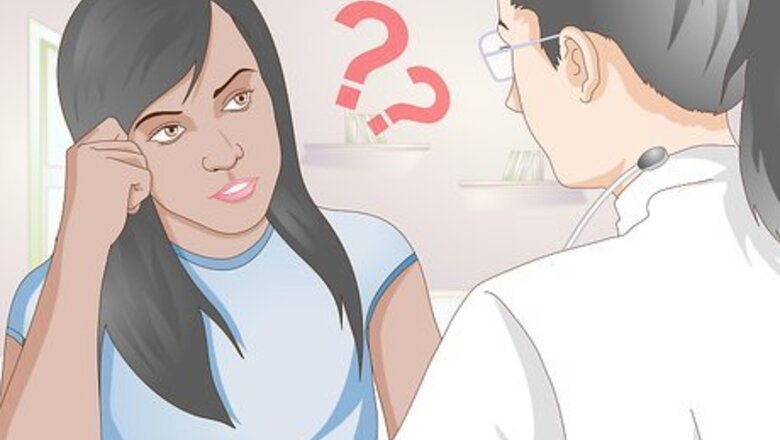
views
Creating a Plan for Post-Operative Care

Talk to your vet. When you take your rabbit in for the surgery, be sure to speak to your vet thoroughly about your rabbit's treatment. Your vet will give you specific instructions about your rabbit's care. When in doubt, always follow the vet's advice. Some questions you should ask your vet include: "What type of pain medication will my rabbit be on?" "What time should I pick my rabbit up?" "How long will the rabbit take to heal?" "What foods would you recommend I feed my rabbit after the surgery?"
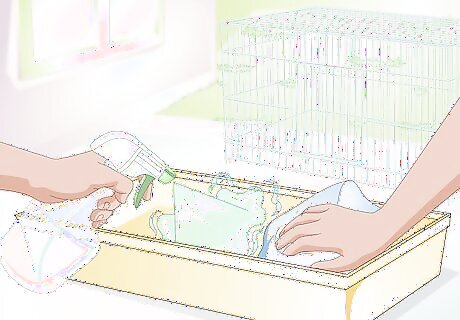
Clean your rabbit’s cage. Thoroughly clean the cage before you bring the rabbit home. You want a clean environment to prevent infection. Remove any shavings, dust, or hay, and replace them with newspaper or a towel. This will help keep the wound clean and clear during recovery. Once your rabbit has recovered (or once it has its stitches removed), you can return shavings to its cage. You can disinfect the cage with a mixture of one part vinegar to four parts water. Use a clean cloth to wipe down the cage's walls and floors. Sterilize the water bowls and toys in hot water. You can boil water before removing it from the heat for a minute. Pour it over the bowls and toys.
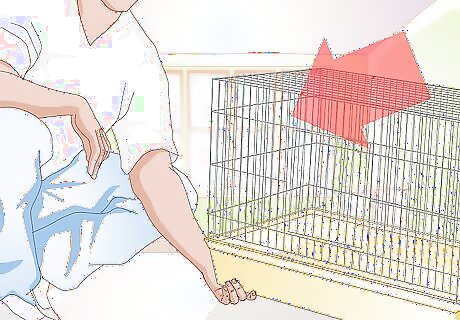
Move your rabbit hutch inside. While you may have an outdoor bunny, you will want to keep the rabbit inside while it heals. This will allow you to keep a closer eye on your rabbit while making sure that it is in a safe, clean environment while it recovers. Try to find a warm, quiet corner of your house to keep the cage. You can put the hutch in your kitchen, garage, or bedroom as long as the room is kept warm.
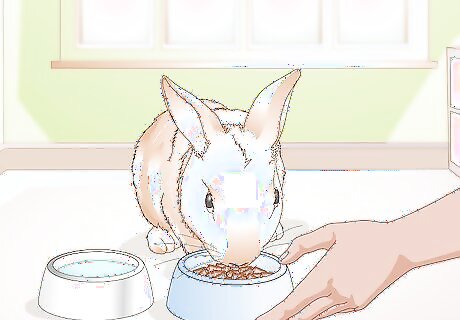
Prepare your rabbit physically. While you would fast most animals before surgery, rabbits are a special case. You must feed your bunny before a surgery. This is because rabbits cannot vomit, and their fast metabolism means that they almost always need something in their stomachs. If the receptionist or vet asks you to not feed your rabbit, it is recommended that you seek care elsewhere. While it is generally true that you should not feed pets before surgery, rabbits are a special exception, and this may be a sign that your vet is not experienced with rabbit care.
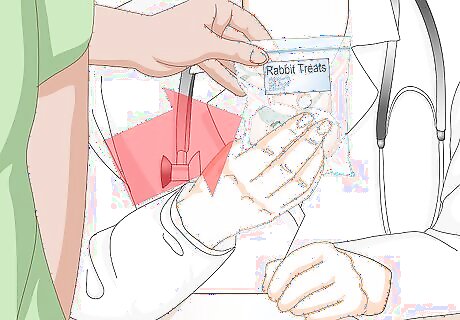
Bring food and treats to the veterinary hospital. If your rabbit has favorite treats, bring these with you to the hospital. Ask the vets to feed your rabbit the treats after surgery. It is important that your rabbit starts eating after the anesthesia wears off, and bringing its favorite food can help encourage it to eat.
Bringing Your Rabbit Home
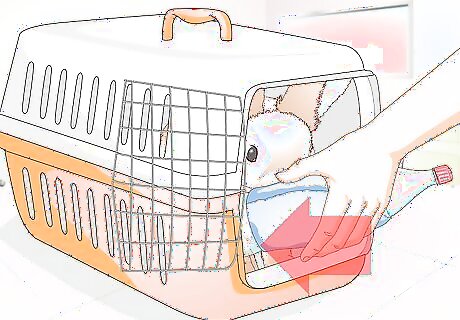
Provide a source of warmth. Take a warm water bottle, and wrap it in dish towels. Place this in the carrier when you bring it home. Once you are home, rewarm the bottle, and place it in the cage. Your bunny may rest against it for warmth. You should not use an electric source of heating as this can cause burns or electrocution. You can also place a light blanket in the cage.
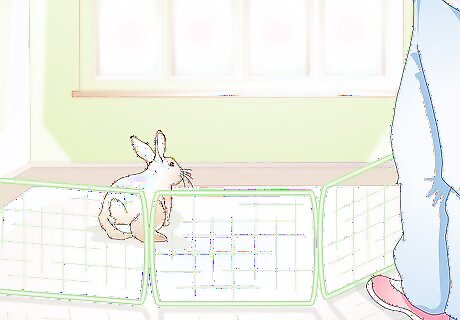
Isolate the healing rabbit. Rabbits can be aggressive around each other. While spaying or neutering can calm your bunny, other rabbits can cause injury during the recovery period. This is especially true when keeping male and female rabbits in the same cage. For up to four weeks after surgery, a male rabbit can still impregnate other rabbits. During this time, its testicles will turn dark and shrivel until they disappear; this is normal. Once the testicles are visibly gone, it is safe to put your bunnies back together. Spayed female rabbits can be injured by male rabbits (even neutered ones). Keep your female rabbit separate from the males until its stitches are removed.
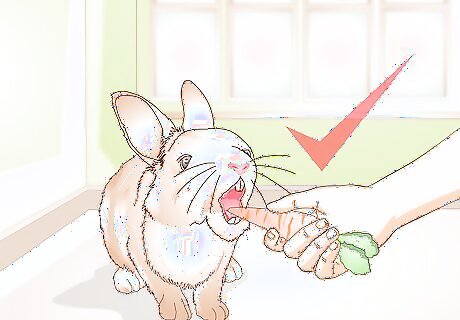
Make sure that it eats. While a male rabbit may start eating right away, a female rabbit may lose its appetite. It is absolutely vital that your rabbit begins to eat the day after surgery, at the latest. Try to give it treats and other favorite snacks. If it still will not eat, put one part pellets and two parts water in a blender, and use a feeding syringe to feed it the mush. Only give this food in pea-sized amounts through the side of their mouth. If it has not eaten for 12 hours after the surgery, call your vet.
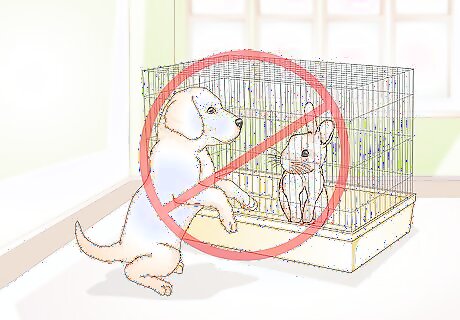
Keep the rabbit calm. While your bunny still has its stitches, you do not want it running around aggressively. This will increase the chances of it opening its wound. Keep any dogs or cats away from the rabbit’s cage during this period. Do not remove the rabbit from its cage or let it wander around the house. It is best not to handle it too much for a few days after the surgery, although you can pet it and give it treats. A female rabbit will hide in the corner of its cage for the first 24 hours after surgery. This is normal. Leave it alone, and do not handle it during this time. If it continues this behavior much longer than a day, you should call a vet.
Helping Your Rabbit Recover
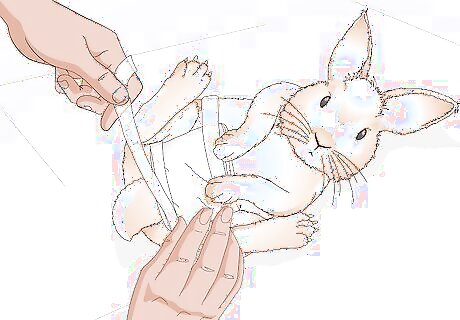
Wrap a band around its stomach. Your rabbit may pull at its stitches or rub up against it because of itching or irritation. Fold up a small dish towel, and lay it over the stitches. Use an elastic ACE bandage or gauze wrap to secure it to the rabbit’s body. As long as your rabbit can breathe, it will be fine. If you don’t have an elastic bandage, you can cut off a band from the leg of a pair of tights.
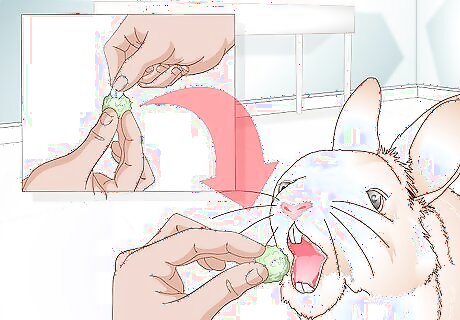
Give your rabbit its medication. Your vet will prescribe a pain medication for your rabbit. Follow their directions, and make sure that the rabbit is receiving the correct dose of medication at the right time. This is especially important when spaying females as it is a more painful surgery than neutering. Your rabbit may be given a pill or an injection that you will have to administer. If you do not feel comfortable injecting your rabbit, ask ahead of time for pills. Your rabbit may be hesitant to swallow a pill. You can try hiding the pill in some food. You can also dissolve the pill in a little bit of water and use a feeding syringe to give the bunny its medication through the side of its mouth. Pain medication injections are given to rabbits subcutaneously. This means that the shot only has to penetrate the rabbit's skin. If you are prescribed injections, ask your vet to teach you how to properly give the injection. Ask your vet when they last gave your rabbit pain medication. It is common for vets to give your rabbit a dose right before they leave for home.
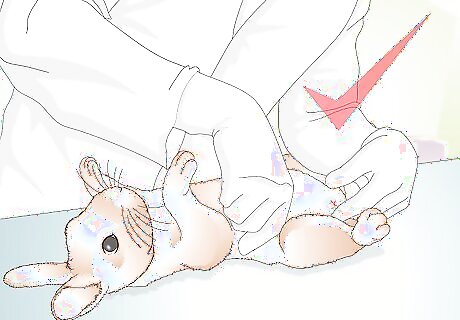
Plan a follow-up visit. Return to your vet when instructed to have the stitches removed. This generally takes place ten days after the surgery. The vet will check the rabbit over to make sure that they have healed properly. Tell your vet if you notice: Bloody or pus-filled incisions An open wound or stitches Diarrhea A lack of energy or a refusal to leave the corner of the cage A “Tooth-grinding” noise Loss of body heat Drainage or swelling near the testicles (for males)




















Comments
0 comment